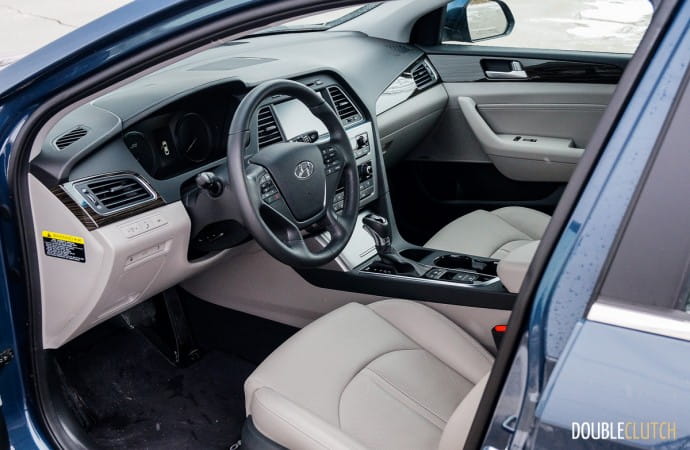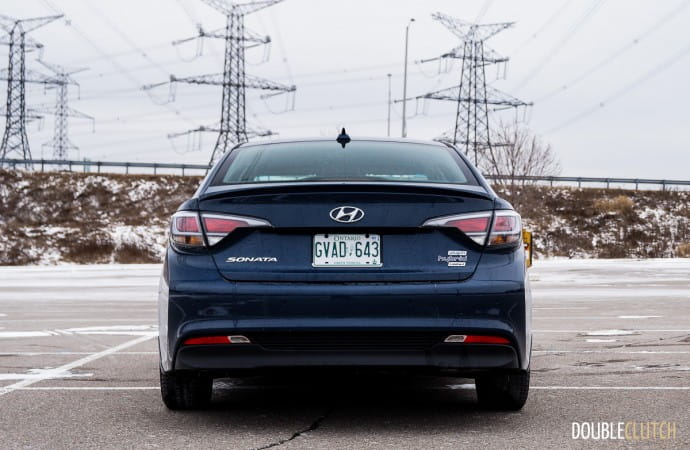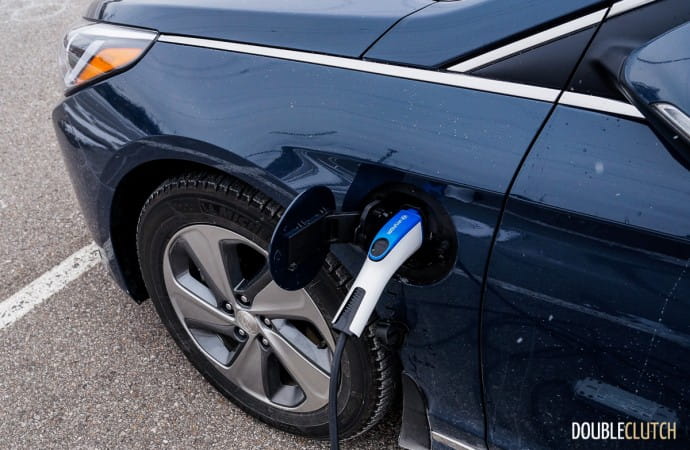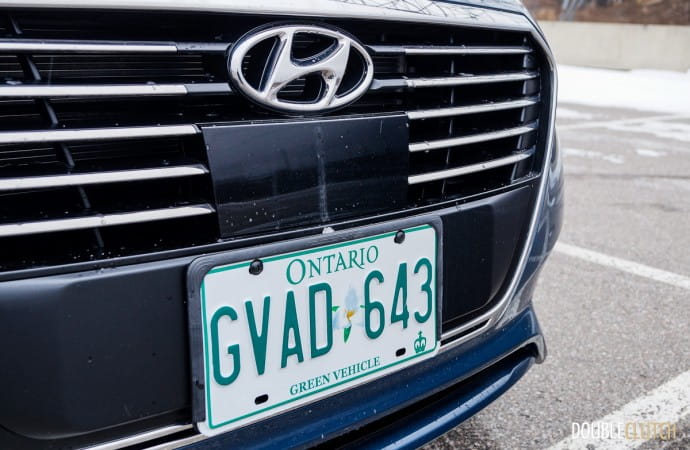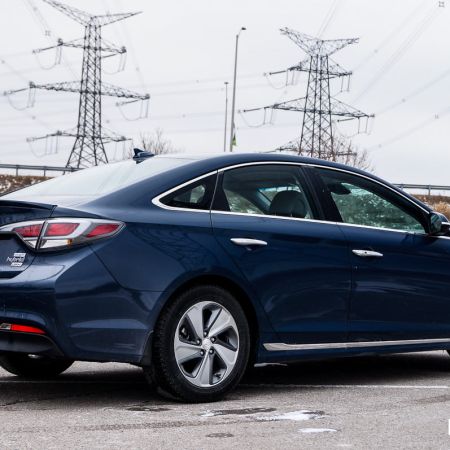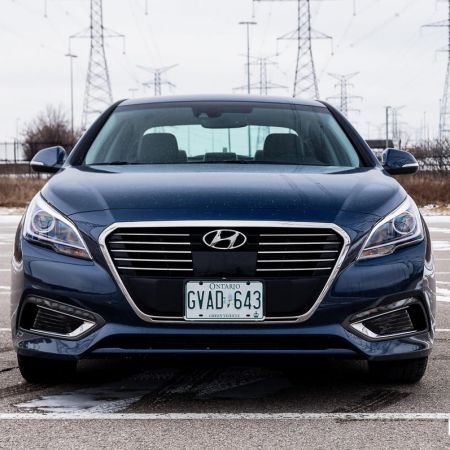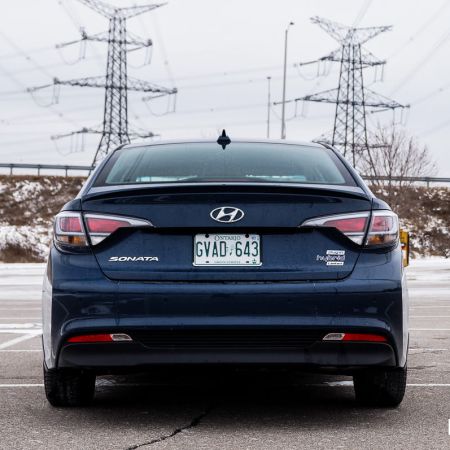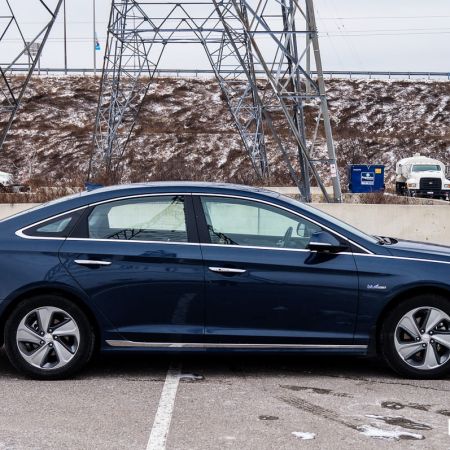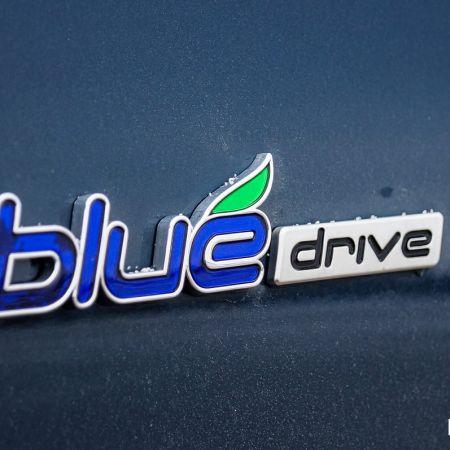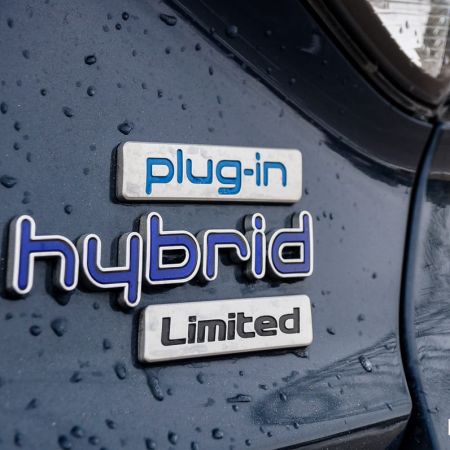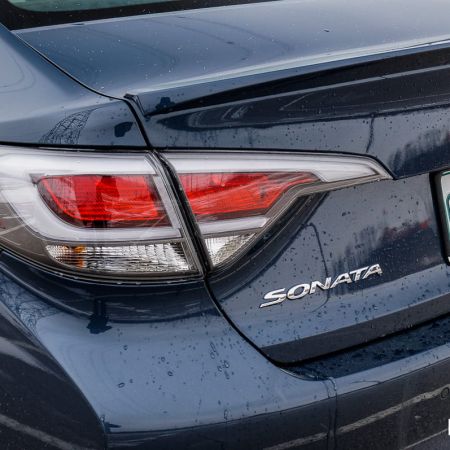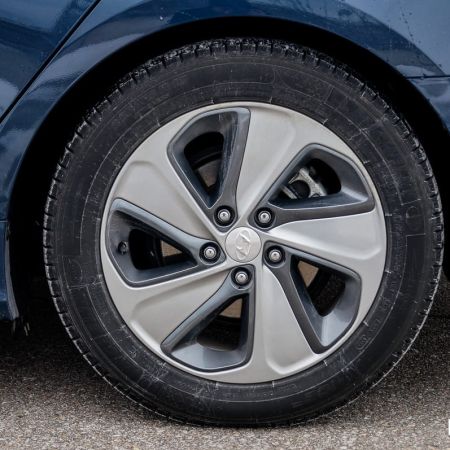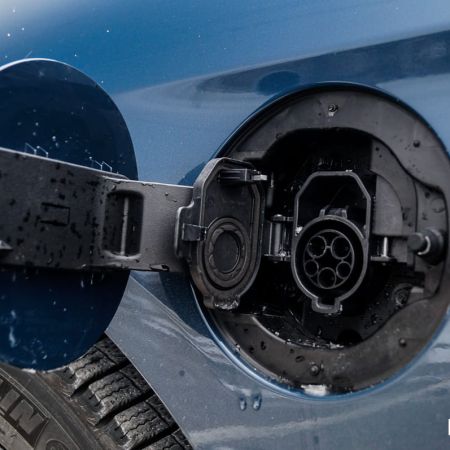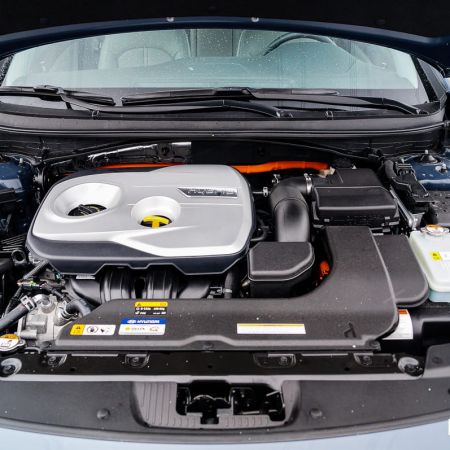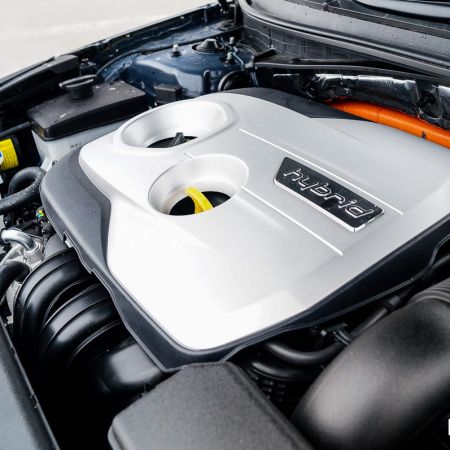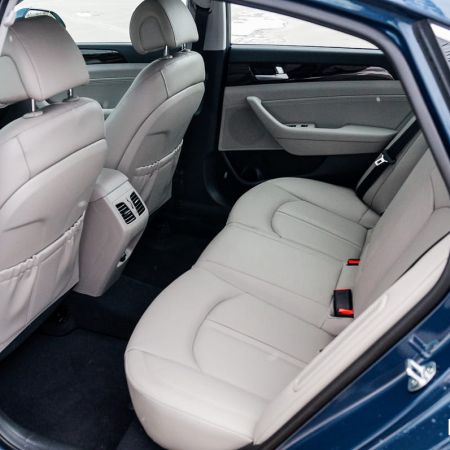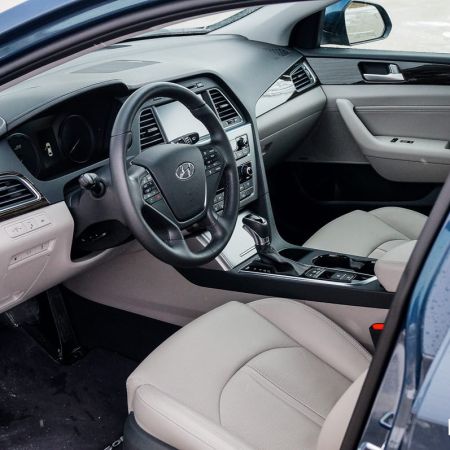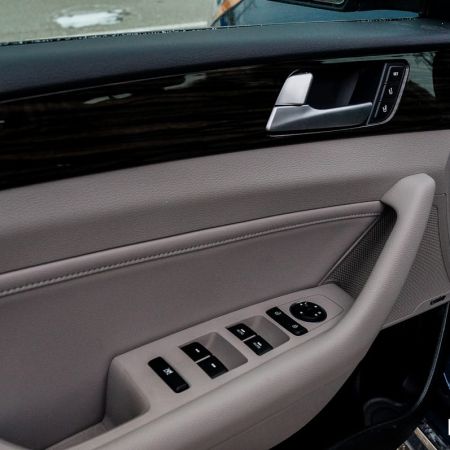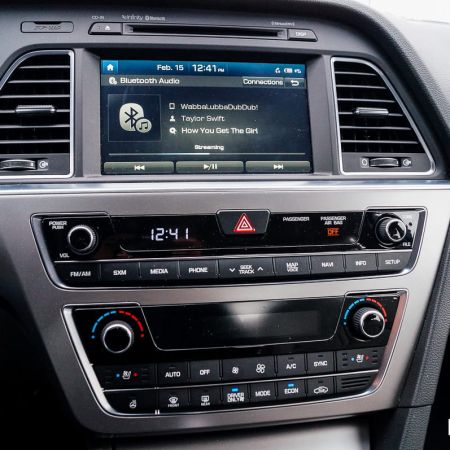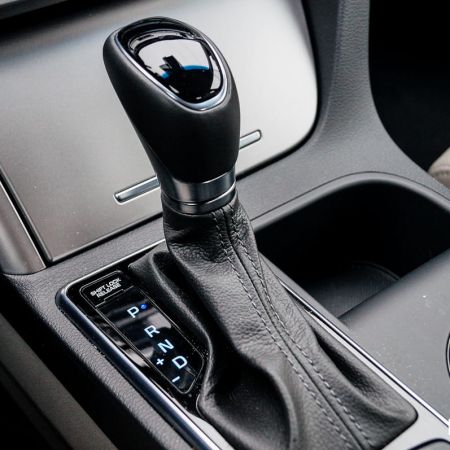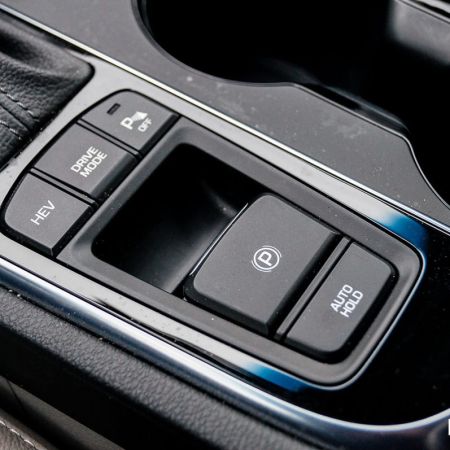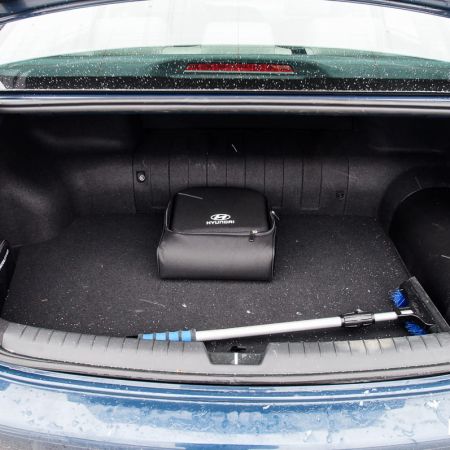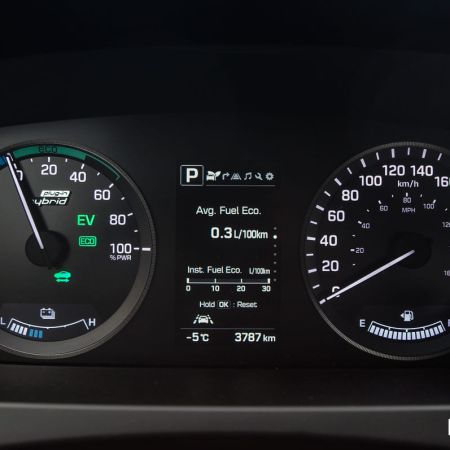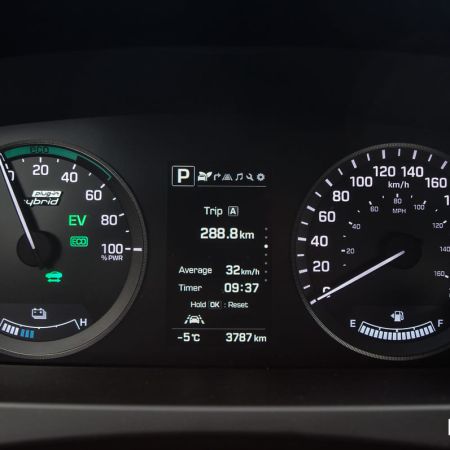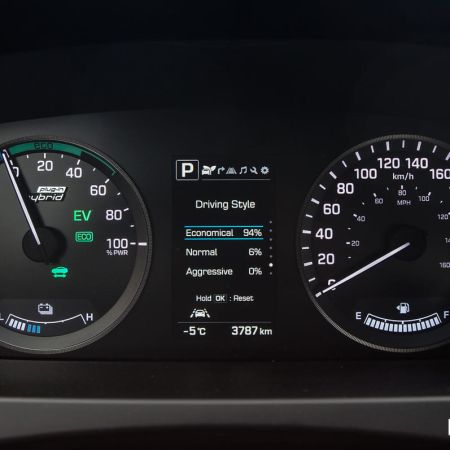Today’s midsize sedans are quite a bit more fuel efficient than those that preceded them – even when comparing to those from ten years ago. Further to that, the last decade has brought in hybrid options, with both gasoline and electricity providing motive power to drivers and their families. Automakers from all corners of the planet are ushering in a new era of having both power and fuel economy at the same time, while still delivering impressive emissions results and maintaining a reasonable price. Reliability is also at an all-time high, and the technology connectivity in cars complements the latest in smartphone offerings.
The staff at DoubleClutch.ca have tested a whole glut of midsize hybrid and plug-in hybrid options, and so when we were offered up a 2016 Hyundai Sonata Plug-in Hybrid Ultimate, we decided to spice things up a bit. With a rated electric range of 43 kilometres, the challenge was simple: for daily driving in the Greater Toronto Area, would it be possible to consume zero gas during the entire week on test? Only one way to find out!
At an as-tested price of $43,999, the Night Sky Blue Sonata Ultimate PHEV came fully loaded without any separate options to choose from. The comprehensive feature set includes bi-xenon high intensity discharge (HID) headlights, adaptive cruise control, as well as a forward collision, blind spot warning, and lane departure warning systems. The collision warning and blind spot monitoring systems were much more aggressive than average, and therefore stayed off for the entire time on test. There’s also a nine-speaker Infinity sound system, (leather) power seat memory settings, and an 8-inch touch screen navigation system. In order to accommodate the larger batteries and keep curb weight down, the plug-in sacrifices 60/40 folding rear seats, LED interior lighting, as well as the panoramic sunroof, among other options. A similarly equipped gasoline-powered Sonata Ultimate 2.0T rings in at $34,799, but currently, the real magic happens with government rebates for green vehicles.
As of February 10, 2016, the Government of Ontario (home province for DoubleClutch.ca) is willing to chip in $8,460 to your cause if you purchase a PHEV version of the Sonata. This brings the cost differential to a mere $740, and the PHEV actually ends up being $1,960 cheaper than an equivalent non-plugin Sonata Hybrid Ultimate. The Sonata PHEV is also eligible for Green Vehicle license plates, which give drivers the ability to use high occupancy vehicle (HOV) or carpool lanes even if they are the sole occupant in the car. While most assume that a plug-in hybrid or full battery electric vehicle (BEV) are significantly more expensive than their gasoline counterparts, the available incentives make the argument much more convincing.
The main basic difference between the regular hybrid Sonata and the plug-in model is the addition of a larger electric motor (67 horsepower versus 51), as well as a much larger battery pack (9.8 kilowatt-hours versus 1.62). These changes allow the Sonata Hybrid to be able to move more easily under full electric power, in addition to extending the overall range in which EV mode can be utilized. With a top speed of over 120 kilometres per hour in full electric, both city and highway driving can be done without consuming gasoline. When the energy in the battery pack is almost fully depleted, a 2.0-litre inline four kicks in and the Sonata PHEV switches to operate in a similar fashion to the regular hybrid model; overall combined system output is 203 horsepower.
Charging can be done via the port on the driver’s side front fender; 120-volt outlets will complete this task in about eight hours, and those lucky enough to have 240-volt access can charge in only two-and-a-half hours. Backing the electric and gas powertrains is a six-speed automatic instead of a Continuously Variable Transmission (CVT) as seen in many other hybrids. While not typical, the transition between gas and electric was seamless, and shifts were at the same level of refinement as any six-speed on a non-hybrid vehicle.
Coming into the test week with the Sonata PHEV, the notion of achieving zero gasoline use was certainly ambitious, if not slightly masochistic. With cold and wintery February weather in Toronto, EV range can be reduced, making things even more difficult. The use of cabin heat required running the gas engine, which was on a self-imposed embargo. It was decided to try and brave the cold and do all driving with only the heated seats and heated steering wheel as a compromise. While the heating elements do consume battery power, they do so in a much more efficient and concentrated fashion than the gas engine. With a 37-kilometre round trip commute during the week, it was a perfect test to see if the PHEV could deliver on full electric operation.
First and foremost, your frostbite tolerance may vary: in temperatures at or above minus five degrees Celsius, the heated seats and steering wheel did an admirable job at keeping the driver’s upper body warm, although both feet required some thawing out at the end of each trip. Even so, the Sonata made the entire round trip on full electric mode, and throttle application remained about as liberal as with any other car – no hypermiling here! Regenerative braking in the city certainly helped to keep the battery charged, and when played right, it might even be possible to exceed the 43 kilometre rated EV range in warmer weather. When straying away from an outlet at home or work, the use of the Plugshare smartphone app was a boon when it came to finding charge locations when away from home. Trips to Mississauga and Markham remained gas-free, with many complimentary 240-volt charging stations scattered around businesses and shopping centres.
With the exception of some slight gas usage at the very beginning of the test for the sake of evaluation, the Sonata PHEV made it through to the end of the week just about entirely in EV mode. After three hundred kilometres and approximately seven full charge cycles, gas fuel economy was 0.3 L/100km for the week – or almost 800 miles per US gallon! With today’s electricity prices, a single charge would cost about $1.25 when assuming average time-of-use rates. With the assumption of a dollar per litre of gasoline, this would equate to a normal non-hybrid Sonata getting about 3.0L/100km.With access to complimentary charge stations in and around the GTA, expect the hit to your pocketbook to be even less.
Extreme testing aside, the 2016 Hyundai Sonata Plug-in Hybrid also demonstrated itself to be a well-mannered machine. In full EV mode, highway cruising was very quiet, with tire and wind noise coming to the forefront due to the lack of sound coming from the gas engine. Ride quality was well suited to a mid-size sedan, and the handling characteristics aren’t any better or worse than any other car in this size and class. All things considered, if you’re looking for a car with all the bells and whistles, but don’t necessarily need all the power, the Plug-In option becomes very enticing once government rebates come into effect. As a value proposition, the PHEV is by far the most bang for your buck in the Sonata range!


